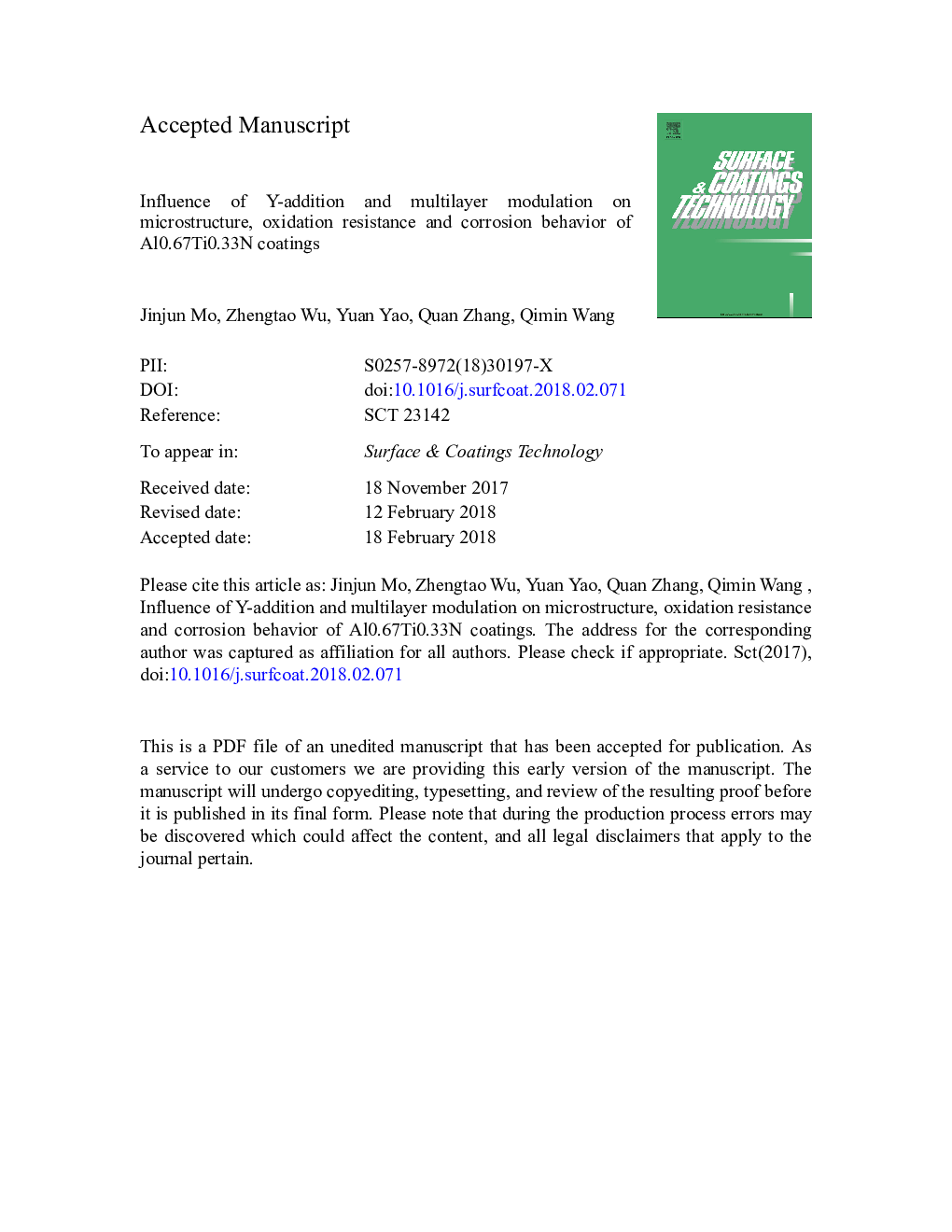| Article ID | Journal | Published Year | Pages | File Type |
|---|---|---|---|---|
| 8023960 | Surface and Coatings Technology | 2018 | 36 Pages |
Abstract
In this work, Al0.67Ti0.33N, Al0.65Ti0.33Y0.02N and Al0.67Ti0.33N/Al0.65Ti0.33Y0.02N multilayer coatings were deposited on cemented carbide by arc ion plating. The effects of yttrium addition and multilayer interface on structure, high-temperature oxidation and corrosion behaviors of the coatings were investigated. The oxidation of the coatings was carried out in a tube furnace in air at 900â¯Â°C for 2â¯h. The corrosion resistance of the coatings was investigated using a potentiodynamic polarization test. The morphology, elemental composition and phase structure of the coatings were determined by SEM, TEM, EDS and XRD. The multilayer structure and the yttrium addition produced refinement of the average grain sizes and densification of the microstructure. The TEM image of the Al0.67Ti0.33N and Al0.65Ti0.33Y0.02N show a nano-multilayer architecture attributed to the difference in ionization rates of Ti and Al. After the oxidation at 900â¯Â°C in air for 2â¯h, the oxidation resistance of the Al0.67Ti0.33N/Al0.65Ti0.33Y0.02N multilayer and the Al0.65Ti0.33Y0.02N coatings was higher than that of the Y-free Al0.67Ti0.33N. In addition, the Al0.67Ti0.33N/Al0.65Ti0.33Y0.02N multilayer coated specimen exhibits a low corrosion current density of 2.24â¯Ãâ¯10â5â¯A/cm2 and a higher corrosion potential of 1.10â¯V, indicating the superior corrosion resistance.
Related Topics
Physical Sciences and Engineering
Materials Science
Nanotechnology
Authors
Jinjun Mo, Zhengtao Wu, Yuan Yao, Quan Zhang, Qimin Wang,
